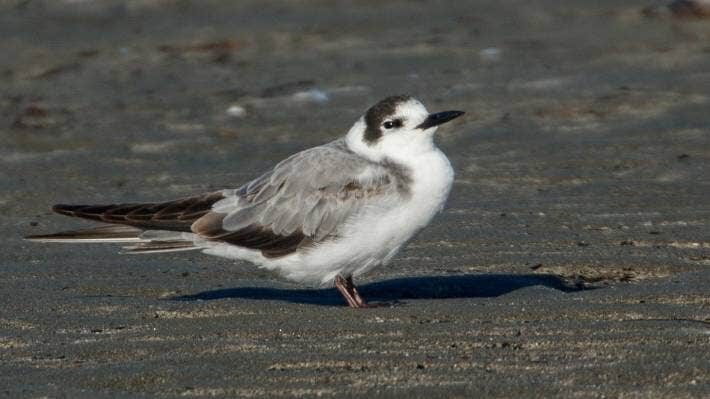
The focus of their attention is easy to miss. The black tern, a small bird of mottled white, grey and black, sits nestled among a group of native white-fronted terns. You wouldn't know to look at it how far it has travelled.
This unassuming visitor is the first of its kind to be seen in New Zealand, with the species originally hailing from Europe, Western Asia and North America.
Resident Roger Smith is one of many people lucky enough to capture it on camera and is as flummoxed as the rest of the birding community about how the bird came to be on a beach north of Wellington.
The bird was first spotted by "eagle-eyed birding enthusiast" Elizabeth Taylor on January 14, and positively identified by various birding experts and the community of online "twitchers" (birdwatchers who collect sightings of rare birds).
People have travelled from all over the country for a glimpse, Smith said, from places like Auckland, Tauranga, and Golden Bay.
Te Papa bird expert Colin Miskelly, who saw the bird on Monday morning, said he thought our nearest neighbour Australia had recorded only three sightings. Those individuals, like this one, were thought to have originated from North America.
"The only twitch that would be bigger would be Happy Feet the emperor penguin."
So how did it end up on our shores? "There's probably an element of getting lost," Miskelly said. This type of bird was migratory and could travel great distances.
"This is a classic case of, 'Yay, it's here', but there has been no suggestion of catching it and sending it home," he said. "Yet if a rare penguin turned up, we'd be wanting to make sure it got home."

It had potentially thrown two other historical bird sightings into question - this sighting might not hold the title of "first in New Zealand" for long. Because of poor photos, two previous sightings of black terns had not been verified at the time, but Miskelly said the committee would be taking another look.
Good quality photos or video footage were paramount, he said. One person had submitted a sighting of the rare South Island kōkako, but a quick look at the video showed it was, in fact, a common quail.




Reader Comments
to our Newsletter